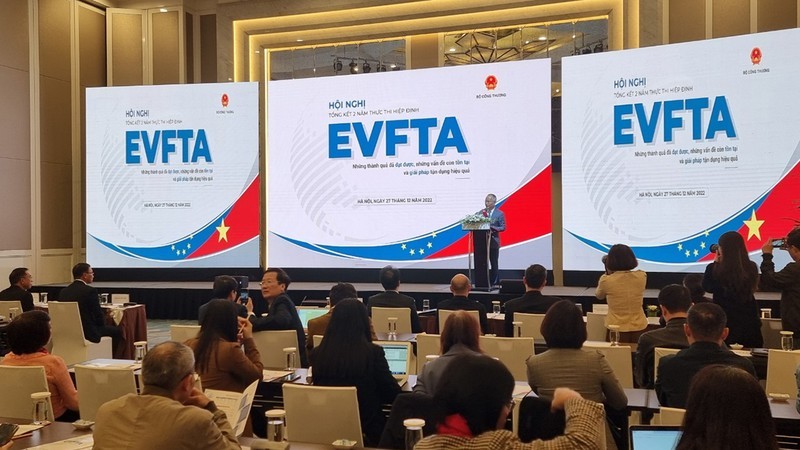In today’s competitive business landscape, having quality manpower is crucial for achieving sustainable success. The right people, with the right skills and capabilities, can significantly impact a company’s productivity, innovation, and customer satisfaction. In this article, we will explore the concept of quality manpower solutions, its benefits, key components, best practices for implementation, success stories, challenges, and future trends, and provide valuable insights to help organizations unlock the potential of their workforce.
I. Introduction
Quality manpower solutions refer to the strategic and holistic approach taken by organizations to attract, develop, engage, and retain talented individuals who can contribute to the overall growth and success of the business. It involves aligning human resource practices with organizational goals and creating an environment that fosters employee satisfaction, productivity, and continuous improvement.
In today’s fast-paced and dynamic business environment, organizations cannot afford to overlook the significance of quality manpower. A strong workforce provides a competitive edge, enables efficient operations, and drives innovation, ultimately leading to increased profitability and market share.
II. Benefits of Quality Manpower Solutions
1. Enhanced productivity and efficiency
When companies invest in quality manpower solutions, they create a workforce that is competent, motivated, and committed to achieving excellence. Employees who possess the required skills and knowledge can perform their tasks efficiently, leading to improved productivity and streamlined operations.
2. Reduced employee turnover
High employee turnover can be detrimental to a company’s growth and stability. Quality manpower solutions focus on attracting and retaining top talent by offering competitive compensation, career development opportunities, and a positive work environment. This leads to increased employee loyalty and reduced turnover, saving the organization recruitment and training costs while fostering a sense of stability and continuity.
3. Improved customer satisfaction
Quality manpower solutions emphasize the importance of hiring individuals who possess not only the technical skills but also the right attitude and customer-centric mindset. A well-trained and engaged workforce can deliver exceptional customer service, leading to higher customer satisfaction, loyalty, and positive brand reputation.
4. Better decision-making and problem-solving
A diverse and skilled workforce brings different perspectives and ideas to the table. By leveraging the collective knowledge and experiences of employees, organizations can make informed decisions and solve complex problems more effectively. Quality manpower solutions foster a culture of collaboration and empower employees to contribute their unique insights, driving innovation and growth.
5. Increased innovation and creativity
Organizations that prioritize quality manpower solutions create an environment that encourages creativity, experimentation, and risk-taking. By nurturing a culture of innovation and providing employees with the necessary resources and support, companies can unleash the full potential of their workforce, leading to breakthrough ideas, product/service enhancements, and a competitive advantage in the market.
III. Key Components of Quality Manpower Solutions
Implementing quality manpower solutions requires a comprehensive approach that encompasses various key components. Let’s explore these components in detail:
1. Strategic recruitment and selection process
At the heart of quality manpower solutions lies a well-defined and strategic recruitment process. Organizations need to identify the specific skills, competencies, and values required for each role and attract candidates who align with the company’s vision and culture. This involves developing targeted job descriptions, leveraging various recruitment channels, conducting thorough candidate assessments, and ensuring a fair and transparent selection process.
2. Comprehensive training and development programs
Investing in employee training and development is essential for enhancing skills, knowledge, and performance. Quality manpower solutions involve the design and implementation of comprehensive training programs that address both technical and soft skills. These programs can range from onboarding and orientation sessions to ongoing professional development opportunities, mentorship programs, and leadership development initiatives.
3. Effective performance management system
To maximize employee potential, organizations need to establish a robust performance management system. This includes setting clear performance goals, providing regular feedback and coaching, conducting performance evaluations, and recognizing and rewarding high performers. An effective performance management system creates a culture of accountability, fosters continuous improvement, and ensures alignment with organizational objectives.
4. Competitive compensation and benefits packages
Attracting and retaining top talent requires offering competitive compensation and benefits packages. Quality manpower solutions involve conducting market research to determine competitive salary ranges, providing performance-based incentives, offering attractive health and wellness benefits, and creating a conducive work environment that promotes work-life balance and employee well-being.
5. Strong organizational culture and employee engagement initiatives
A positive and inclusive organizational culture is vital for attracting, engaging, and retaining quality manpower. Organizations should foster a supportive work environment that values diversity, encourages open communication, recognizes employee contributions, and promotes work-life integration. Employee engagement initiatives, such as team-building activities, employee recognition programs, and opportunities for career growth and advancement, play a crucial role in creating a motivated and committed workforce.
IV. Best Practices for Implementing Quality Manpower Solutions
To effectively implement quality manpower solutions, organizations should adopt the following best practices:
1. Aligning recruitment strategies with organizational goals
To ensure the recruitment process yields quality candidates, organizations must align their recruitment strategies with their overall business objectives. This involves identifying the skills and competencies required to achieve strategic goals and attracting candidates who possess those qualities. By focusing on the long-term organizational vision, companies can build a workforce that contributes to sustainable success.
2. Conducting thorough candidate assessments
Screening and assessing candidates rigorously is essential to identify the most suitable individuals for the job. Utilizing a combination of interviews, skills assessments, and behavioral assessments helps organizations gauge candidates’ technical competence, cultural fit, and potential for growth. Additionally, reference checks and background verifications provide valuable insights into candidates’ past performance and credibility.
3. Providing ongoing training and upskilling opportunities
Continuous learning and development are crucial for maintaining a skilled and adaptable workforce. Organizations should invest in training programs that address evolving industry trends, technological advancements, and changing job requirements. By offering upskilling opportunities, companies can empower their employees to acquire new competencies, stay relevant, and contribute to organizational growth.
4. Encouraging open communication and feedback
Establishing a culture of open communication is essential for fostering collaboration, innovation, and employee engagement. Organizations should encourage employees to share their ideas, concerns, and feedback, creating a safe and inclusive space where everyone’s voice is heard. Regular feedback sessions, town hall meetings, and anonymous suggestion boxes can facilitate constructive dialogue and continuous improvement.
5. Recognizing and rewarding employee achievements
Recognizing and rewarding employee contributions reinforces a positive work culture and motivates employees to excel. Organizations should implement recognition programs that celebrate individual and team accomplishments, whether through monetary rewards, public acknowledgment, career advancement opportunities, or other forms of recognition. Regular performance evaluations and merit-based promotions also contribute to a sense of fairness and progression within the organization.
V. Case Studies: Success Stories of Quality Manpower Solutions
To illustrate the impact of quality manpower solutions, let’s delve into a few success stories:
1. Labour Link Vietnam: Enhancing operational efficiency through effective manpower planning
Company A recognized the importance of efficient manpower planning to optimize their operations. By conducting thorough workforce analysis, they identified areas where skills gaps existed and implemented targeted recruitment strategies to fill those gaps. They also invested in training programs to upskill existing employees and ensure they had the necessary competencies. As a result, Company A witnessed improved productivity, reduced errors, and enhanced customer satisfaction.
2. ICC Hanoi: Reducing employee turnover through a comprehensive talent retention program
Facing a high turnover rate, Company B implemented a comprehensive talent retention program. They focused on creating a positive work environment, enhancing employee engagement through regular feedback sessions, and providing opportunities for professional growth and development. Company B also implemented competitive compensation and benefits packages to attract and retain top talent. These efforts resulted in a significant reduction in employee turnover, increased employee loyalty, and improved team morale.
3. TNG Vietnam: Fostering a culture of innovation and creativity for sustainable growth
Company C understood the importance of fostering a culture of innovation to stay ahead in a competitive market. They encouraged employees to explore new ideas, experiment with different approaches, and embrace calculated risks. Company C established cross-functional teams and provided them with the autonomy and resources to innovate. This focus on creativity led to the development of groundbreaking products, increased market share, and sustained growth for the company.
VI. Challenges and Solutions in Implementing Quality Manpower Solutions
Implementing quality manpower solutions may come with certain challenges. Here are a few common challenges organizations face and possible solutions:
1. Attracting top talent in a competitive job market
In a competitive job market, attracting top talent can be challenging. To overcome this, organizations can differentiate themselves by promoting their unique company culture, offering attractive compensation packages, and showcasing opportunities for growth and development. Leveraging social media platforms, professional networks, and industry events can also help reach a wider pool of potential candidates.
2. Managing diverse workforce dynamics
In today’s globalized and diverse workforce, managing different perspectives, cultural backgrounds, and communication styles can be complex. Organizations should invest in diversity and inclusion training to foster understanding, respect, and collaboration among employees. Additionally, establishing employee resource groups and mentorship programs can create a supportive network and facilitate cross-cultural learning.
3. Adapting to technological advancements and automation
As technology continues to evolve, organizations must adapt to stay relevant. This may involve reskilling employees to work alongside automation and leveraging technology to streamline processes. Companies should proactively identify emerging technological trends, invest in training programs, and create a culture that embraces change and innovation.
4. Addressing skill gaps and changing industry demands
Industries are constantly evolving, requiring employees to acquire new skills to meet changing demands. Organizations should conduct regular skills assessments to identify skill gaps and develop targeted training programs to bridge those gaps. Collaboration with educational institutions and industry associations can also provide opportunities for employees to acquire specialized skills and knowledge.
VII. Future Trends in Quality Manpower Solutions
Looking ahead, several trends are shaping the landscape of quality manpower solutions:
1. Embracing remote work and flexible work arrangements
The COVID-19 pandemic has accelerated the adoption of remote work and flexible work arrangements. Organizations are recognizing the benefits of these arrangements, such as increased productivity, reduced costs, and improved work-life balance. Quality manpower solutions will involve leveraging technology to enable effective remote collaboration, providing the necessary infrastructure and support for remote employees, and reimagining traditional work models.
2. Leveraging data analytics for informed decision-making
Data analytics is transforming the field of human resources, enabling organizations to make data-driven decisions. Quality manpower solutions will involve leveraging data analytics tools to identify trends, predict future talent needs, assess performance, and improve recruitment and retention strategies. By harnessing the power of data, organizations can gain valuable insights and optimize their human resource practices.
3. Prioritizing employee well-being and work-life balance
Employee well-being and work-life balance are increasingly becoming critical factors in attracting and retaining talent. Organizations will focus on creating a supportive work environment that promotes mental health, offers flexible schedules, and encourages work-life integration. Wellness programs, mindfulness initiatives, and employee assistance programs will play a central role in ensuring employees’ holistic well-being.
4. Integrating artificial intelligence and automation in HR processes
Artificial intelligence (AI) and automation are revolutionizing HR processes, from recruitment to performance management. Quality manpower solutions will involve leveraging AI-powered tools for resume screening, chatbots for candidate engagement, and automation for repetitive HR tasks. This integration of technology will free up HR professionals’ time, allowing them to focus on strategic initiatives and creating a personalized employee experience.
VIII. Conclusion
Quality manpower solutions are essential for organizations seeking sustainable success in today’s competitive business landscape. By focusing on attracting, developing, engaging, and retaining quality talent, companies can enhance productivity, reduce turnover, improve customer satisfaction, drive innovation, and adapt to evolving industry demands. Implementing strategic recruitment processes, investing in training and development, establishing effective performance management systems, offering competitive compensation and benefits, and fostering a positive work culture are all integral components of quality manpower solutions.
As organizations navigate the challenges of a dynamic workforce and embrace future trends, they will unlock the full potential of their employees and position themselves for long-term growth. Quality manpower solutions are not just an investment in human resources; they are an investment in the success and sustainability of the entire organization.
IX. FAQs
- What are the key benefits of quality manpower solutions? Quality manpower solutions bring enhanced productivity, reduced turnover, improved customer satisfaction, better decision-making, and increased innovation and creativity to organizations.
- How can organizations ensure the effectiveness of their recruitment process? Organizations can ensure the effectiveness of their recruitment process by aligning it with organizational goals, conducting thorough candidate assessments, and ensuring a fair and transparent selection process.
- What role does employee training and development play in quality manpower solutions? Employee training and development are crucial for enhancing skills, knowledge, and performance, ensuring that employees stay relevant and contribute to organizational growth.
- How can organizations foster a culture of innovation and creativity? Organizations can foster a culture of innovation and creativity by encouraging idea-sharing, providing resources and support for experimentation, and creating cross-functional teams that drive innovation.
- What challenges do organizations face in implementing quality manpower solutions? Common challenges include attracting top talent, managing diverse workforce dynamics, adapting to technological advancements, and addressing skill gaps and changing industry demands.
Follow our channel for more updated news of Vietnamese labour market




